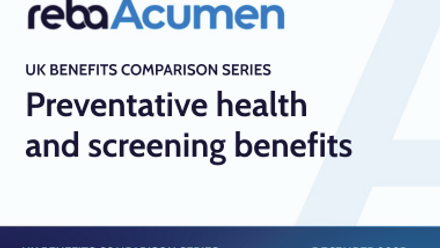In it for the long-haul: Sky’s Tom Gardner on the value of long-term return on investment
Employers have an abundance of data at their fingertips but using it to prove return on investment (ROI) is not always straightforward.
During REBA’s January webinar, Drivers of employee benefits trends for 2025 with strategic partners Workhuman, Tom Gardner, head of reward, benefits and employment tax at Sky, highlighted the importance of employee feedback when trying to ascertain ROI.
“Employee listening data is the most important thing that we start with. We survey our staff in full once a year and with other pulse surveys during the year,” he said.
This enables them to come up with a problem statement – the issue they’re trying to address among their workforce – to prove ROI on any benefit or intervention, he argued.
He said: “If I think about some of the employee listening that we're doing now, we think we've identified a problem statement that there is a particular kind of cohort of our mid-career workforce who is generally less engaged than other areas.
“And if we correlate that with things like their pay bands, their ages, their kind of stage of life, we can identify what would be valuable interventions in that space, which could move the engagement scores positively,” said Gardner.
He highlighted that proving ROI can be difficult in the short term. “Don't expect to be able to prove in the space of a year, if I spend a million pounds on this intervention, it'll give me back five.
“But actually, observing and tracking the data of the things that you provide can, over time, get back to proof points you need,” he said.
An example of long-range ROI given by Gardner related to health pathways.
“We had a significant problem five-to-10 years ago of spending lots of money on high impact mental health interventions.
“We weren't catching people and helping them before they got to that stage.
“But by implementing something that provided a frictionless, easy access to counselling services in that particular case, over the space of one or two years, we discovered that the numbers of people that we were helping was going up and the amount of money that we were spending was coming down,” said Gardner.
That was a clear example of where they were able to make the investment stretch much further with a tangible benefit for its people and therefore the business.
Yet, as Gardner noted, it took time to prove the ROI.







